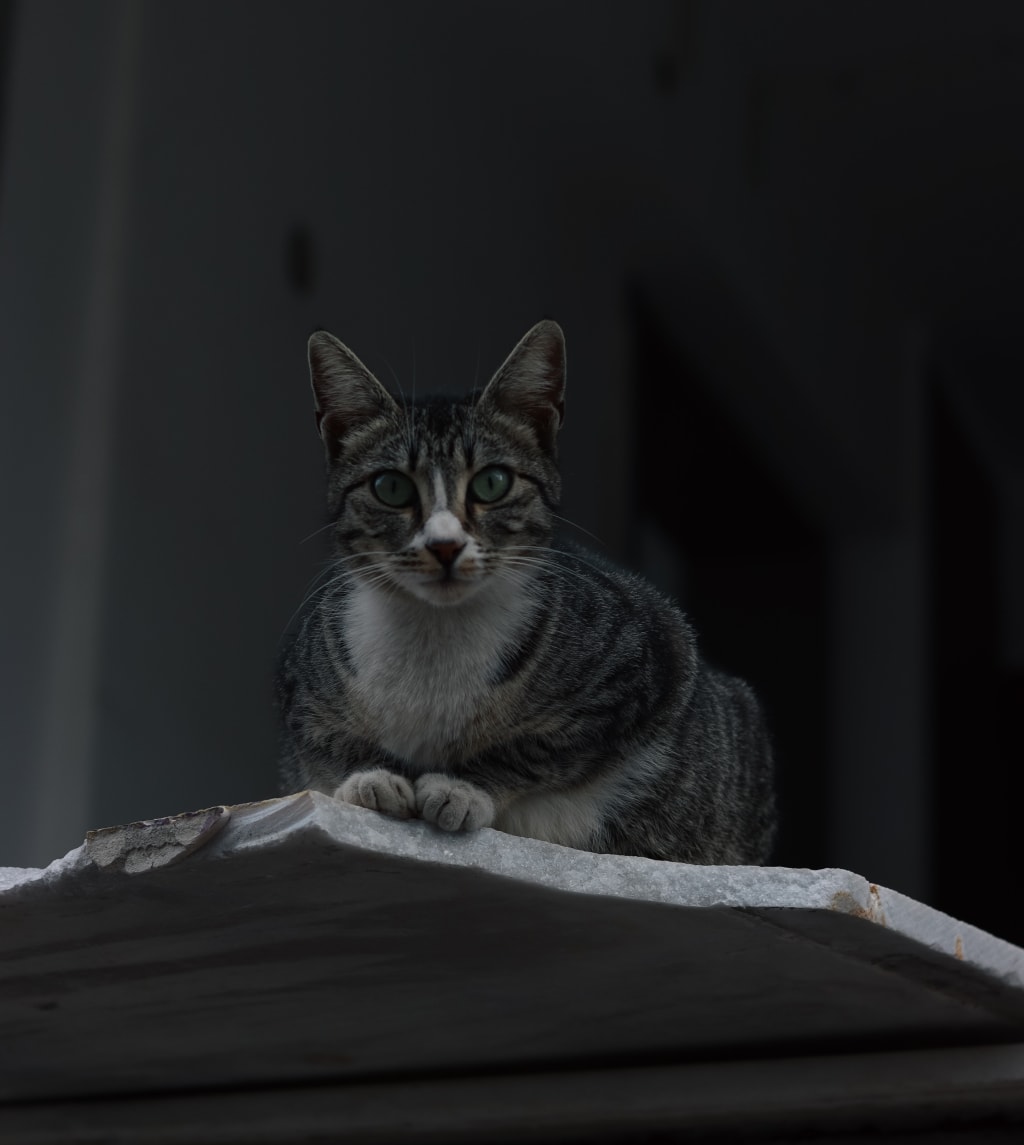Black-footed cat
"Africa's Tiny Warrior: Unveiling the Black-footed Cat, the Continent's Smallest Wild Feline"

The Black-footed cat exhibits a distinctive appearance characterized by tawny fur adorned with a multitude of black spots, which envelop its entire body. Notably, its head possesses a darker hue compared to the remainder of its physique, albeit appearing paler above the eyes. Remarkably, the cat's whiskers boast a pristine white coloration, while its ears display grizzled dark brown hairs. Moreover, elongated stripes can be observed on the neck and back, originating from certain spots, while the shoulders exhibit transverse stripes formed by these spots. The forelegs and hind legs exhibit irregular striping patterns, contributing to the cat's unique appearance. The tail, too, bears a complex pattern of spots. Lastly, the undersides of the cat's feet display either black or dark brown pigmentation.
DIET AND NUTRITION
As carnivores, the primary diet of Black-footed cats consists of mice, small lizards, insects, and birds. These agile hunters have demonstrated remarkable adaptability to their environment, allowing them to thrive without significant dependence on water sources. Consequently, they have evolved to require minimal hydration, exhibiting a remarkable ability to sustain themselves without frequent access to drinking water.
MATING HABITS
Mating Behavior:
Black-footed cats exhibit a polygynous mating system, as male territories can overlap with those of up to five females, whereas female ranges typically overlap with only one male range.
Pregnancy Duration:.
The gestation period for Black-footed cats lasts approximately 59 to 68 days.
Baby Carrying:
Females give birth to litters consisting of one to three kittens, although it is more common for litters to contain one to two kittens.
Reproduction Season:
The reproduction season for Black-footed cats spans from July to March.
Independent Age:
At three weeks old, the kittens begin venturing outside their den. By around six weeks old, they are fully weaned and capable of hunting their own prey. By the age of five months, the kittens have achieved independence, although they may remain within their mother's range
GEOGRAPHY
The Black-footed cat's natural habitat encompasses regions within Namibia, South Africa, with some marginal presence extending into Zimbabwe and the southernmost areas of Angola. These feline species primarily occupy expansive, arid savannas and semi-arid shrublands, particularly within the Karoo and the southwestern Kalahari regions. Their preferred habitats feature short grasses, sparse bush cover, and intermittent clusters of low-lying shrubs and taller grasses.
HABITS AND LIFESTYLE
Male Black-footed cats establish territories that encompass significantly larger areas compared to those of females, sometimes overlapping with the ranges of up to four females.
These males utilize scent marking and rubbing to demarcate their territorial boundaries. On the other hand, female territories also tend to overlap with those of other females; however, it is worth noting that females exclusively engage in solitary hunting activities within their respective territories.
Black-footed cats lead predominantly solitary lives, typically only coming together with others during the breeding season or when a mother has dependent offspring.
They strictly adhere to a nocturnal lifestyle, engaging in hunting activities exclusively at night while seeking rest during the daylight hours. They seek shelter in abandoned termite mounds or unoccupied burrows previously inhabited by springhares, porcupines, or aardvarks, utilizing these secluded spaces for daytime repose.
POPULATION
As reported by the IUCN Red List, the total population of mature Black-footed cat individuals is estimated to be fewer than 10,000. Presently, this species holds a Vulnerable (VU) classification on the IUCN Red List, and its population numbers are experiencing a decline.
The most significant threat to the Black-footed cat population arises from the use of traps and poisons intended for other animals. Farmers often target the African wildcat, inadvertently placing the Black-footed cat at risk of falling victim to poisoned bait and steel-jaw traps. Moreover, the consumption of poisoned carcasses used for locust and jackal control can prove fatal to Black-footed cats. Additionally, overgrazing by cattle contributes to habitat degradation across the Black-footed cat's range, impacting their access to the small vertebrates that comprise their diet.
Enjoying the content? Subscribe to our page to stay updated and be a part of our journey!
We hope you've been finding our content insightful and enjoyable. We appreciate your support and wanted to take a moment to invite you to subscribe to our page, becoming an integral part of our exciting journey ahead..
About the Creator
Reader insights
Good effort
You have potential. Keep practicing and don’t give up!
Top insight
Expert insights and opinions
Arguments were carefully researched and presented





Comments
There are no comments for this story
Be the first to respond and start the conversation.